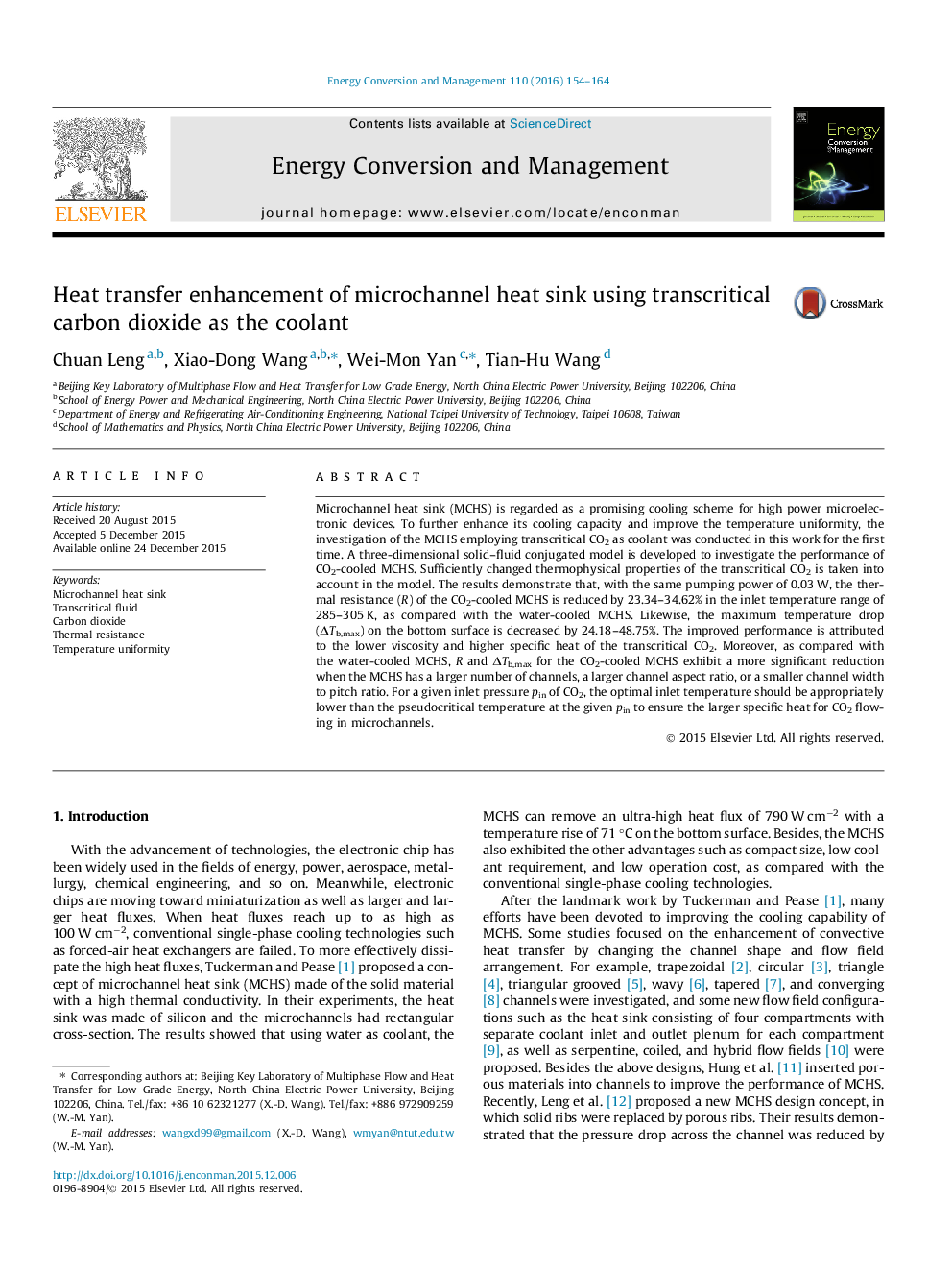| کد مقاله | کد نشریه | سال انتشار | مقاله انگلیسی | نسخه تمام متن |
|---|---|---|---|---|
| 760373 | 1462852 | 2016 | 11 صفحه PDF | دانلود رایگان |
• Transcritical carbon dioxide is used as the coolant of microchannel heat sink.
• Thermal resistance and temperature uniformity are improved significantly.
• The improvement is attributed to lower viscosity and higher specific heat of CO2.
Microchannel heat sink (MCHS) is regarded as a promising cooling scheme for high power microelectronic devices. To further enhance its cooling capacity and improve the temperature uniformity, the investigation of the MCHS employing transcritical CO2 as coolant was conducted in this work for the first time. A three-dimensional solid–fluid conjugated model is developed to investigate the performance of CO2-cooled MCHS. Sufficiently changed thermophysical properties of the transcritical CO2 is taken into account in the model. The results demonstrate that, with the same pumping power of 0.03 W, the thermal resistance (R) of the CO2-cooled MCHS is reduced by 23.34–34.62% in the inlet temperature range of 285–305 K, as compared with the water-cooled MCHS. Likewise, the maximum temperature drop (ΔTb,max) on the bottom surface is decreased by 24.18–48.75%. The improved performance is attributed to the lower viscosity and higher specific heat of the transcritical CO2. Moreover, as compared with the water-cooled MCHS, R and ΔTb,max for the CO2-cooled MCHS exhibit a more significant reduction when the MCHS has a larger number of channels, a larger channel aspect ratio, or a smaller channel width to pitch ratio. For a given inlet pressure pin of CO2, the optimal inlet temperature should be appropriately lower than the pseudocritical temperature at the given pin to ensure the larger specific heat for CO2 flowing in microchannels.
Journal: Energy Conversion and Management - Volume 110, 15 February 2016, Pages 154–164
